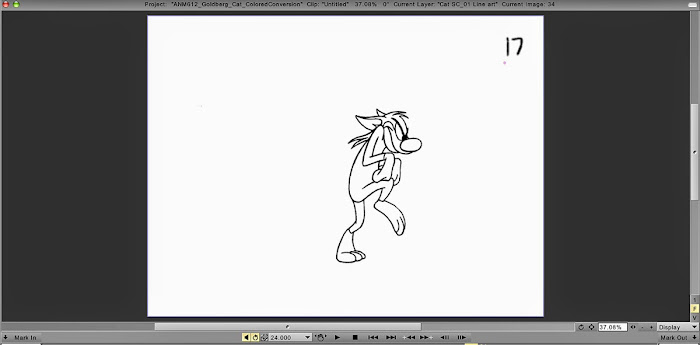Best way of timeline handling
Posted: 03 Jun 2014, 21:52
Hello.I have a question about timeline handling.
For example, I try to make a loop animation that has 4 frames.
I will make them, moving back and forth in timeline via keyboard shortcuts.
And I always use "Go to Next Instance" and "Go to Previous Instance" to move in timeline, but those shortcuts aren't enough because it's a loop animation and I need to connect frame No.1 and frame No.4. So I need to use "Layer.First Image" and "Layer.Last Image" to make them loopable. But it's kinda bothering to use those 4 keyboard shortcuts consciously.
I mean, I always forget what frame I am drawing right now(I hide timeline when drawing), so I always unconsciously use "Go to Next Instance" on frame No.4 or "Go to Previous Instance" on frame No.1 and waste lots of time.
So I want to go back to first frame and last frame automatically when I get to last image or first image,just like 2nd time line of this gif image. I can do that when I add bookmarks to all frames and use "Next Bookmark" and "Previous Bookmark",
but I need to make bookmarks in this case. Ideal solution is,I use "Go to Next Instance" and "Go to Previous Instance" .When I get to last image,frame Nol.4 and use "Go to Next Instance", it goes back to frame No.1 , and If I use "Go to Previous Instance" on frame No.1, I can go to last image, frame No.4. Is it possible?
Or if you know much better way to solve my problem, please tell me.
For example, I try to make a loop animation that has 4 frames.
I will make them, moving back and forth in timeline via keyboard shortcuts.
And I always use "Go to Next Instance" and "Go to Previous Instance" to move in timeline, but those shortcuts aren't enough because it's a loop animation and I need to connect frame No.1 and frame No.4. So I need to use "Layer.First Image" and "Layer.Last Image" to make them loopable. But it's kinda bothering to use those 4 keyboard shortcuts consciously.
I mean, I always forget what frame I am drawing right now(I hide timeline when drawing), so I always unconsciously use "Go to Next Instance" on frame No.4 or "Go to Previous Instance" on frame No.1 and waste lots of time.
So I want to go back to first frame and last frame automatically when I get to last image or first image,just like 2nd time line of this gif image. I can do that when I add bookmarks to all frames and use "Next Bookmark" and "Previous Bookmark",
but I need to make bookmarks in this case. Ideal solution is,I use "Go to Next Instance" and "Go to Previous Instance" .When I get to last image,frame Nol.4 and use "Go to Next Instance", it goes back to frame No.1 , and If I use "Go to Previous Instance" on frame No.1, I can go to last image, frame No.4. Is it possible?
Or if you know much better way to solve my problem, please tell me.
